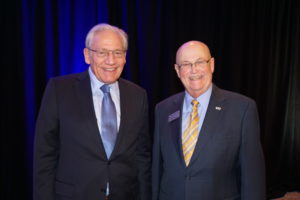
The Federal Reserve Bank of Minneapolis will no longer permit small bank holding companies looking to make an acquisition to use the “hypothetical dividend” approach, reported attorneys from the Winthrop and Weinstine law firm leading a breakout session at the Grand Event seminar hosted by United Bankers’ Bank Oct. 19 in Bloomington, Minn.
The Small Bank Holding Company Policy Statement requires a 25 percent cash down payment on the purchase price in connection with an acquisition by a bank holding company. Acquisition debt cannot exceed 75 percent of the purchase price. The Small Bank Holding Company Policy Statement applies to all bank holding companies with $3 billion in assets or less.
Previously, if a holding company could demonstrate that it would be able to acquire sufficient cash via a dividend from its bank subsidiary to make a 25 percent down payment in the acquisition, the Federal Reserve Bank of Minneapolis accepted the application. In such situations, the bank was assumed to have made the dividend to the holding company and the holding company was allowed to use debt to finance more than 75 percent of the price of an acquisition. Informally known as the “hypothetical dividend” approach, this analysis was dependent on the fact that “the dividend would not jeopardize the well-capitalized status of the subsidiary or the health of the banking organization,” explained Ed Drenttel of Winthrop & Weinstine.
“If you had excess capital in your bank, the Fed was willing to allow you to apply that excess capital to your down payment and, therefore, you didn’t actually have to come up with the 25 percent in cash. That will no longer be allowed,” Drentell summarized. “I don’t know why they terminated it after years and years of allowing it.” Drenttel said the Fed changed its approach in August.
From now on, the Federal Reserve Bank of Minneapolis will not permit the hypothetical dividend approach and a holding company looking to make an acquisition will need to dividend the 25 percent from its subsidiary bank to the holding company, then fund the rest of the purchase price with a bank stock loan or other forms of financing, Drenttel said.
“The additional issue this creates in an acquisition is that you may now need to get additional regulatory approval from the bank regulators to pay the dividend to fund the required down payment,” Drentell said. Getting regulators to approve the dividend could delay the acquisition process, Drenttel said.
